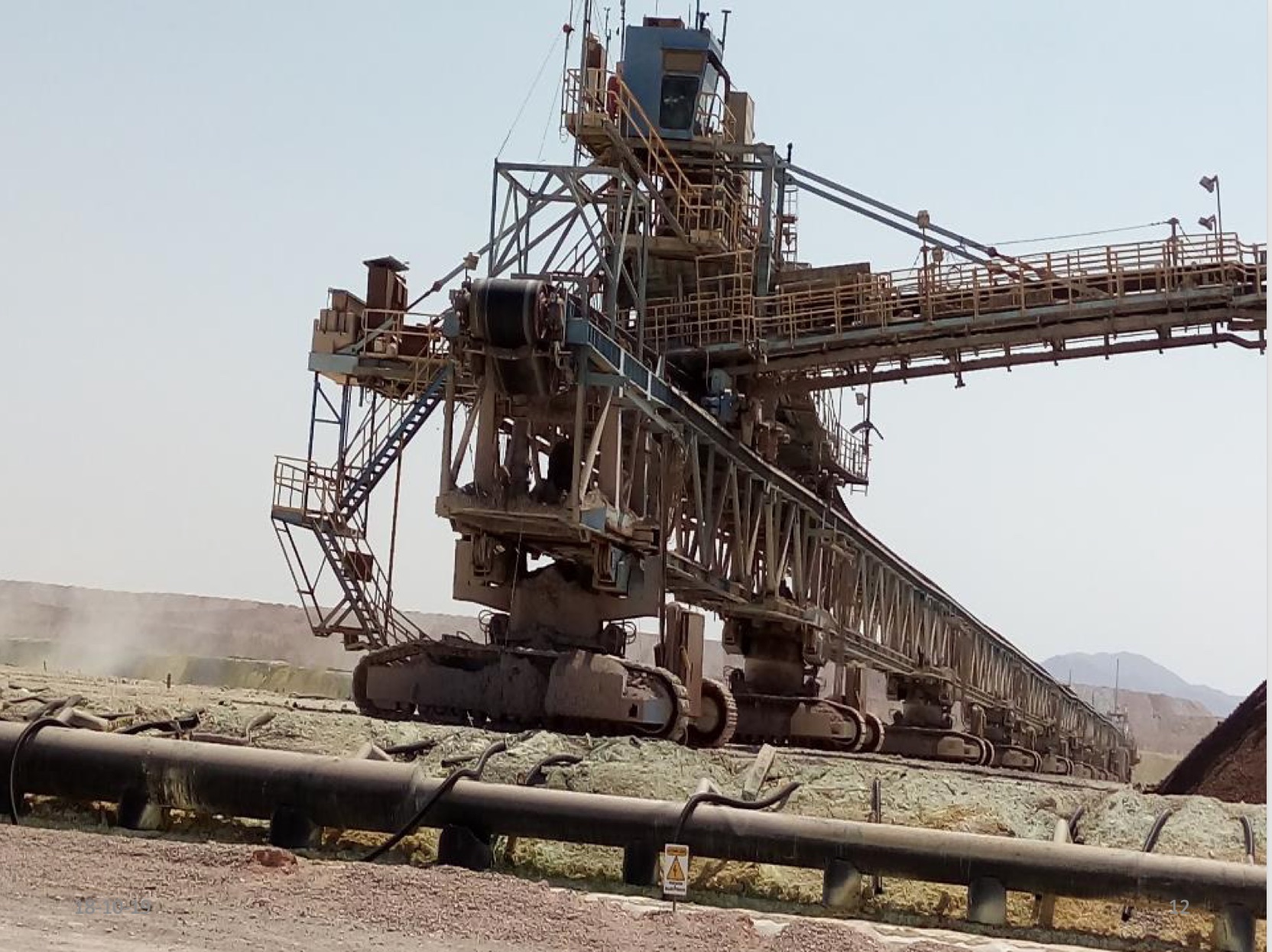BHP is one of the world’s largest mining companies, with operations across the globe. BHP Billiton’s Spence copper cathode project is in the Atacama Desert in the North of Chile. The open-pit copper mine is located 1,700 meters above sea level and has both oxides and sulphides collected and processed in separate campaigns. The Stacking Bridge 13 is responsible for the leaching of oxides. The dynamic oxide stacks area has dimensions of 1,100 metres by 260 metres in each of its fields. Its production in 2017 was 198,039 tons of copper.
Challenge
- Create a solution to reduce the high risk to the workers’ safety and health during the Stacker Bridge 13 at Minera BHP Billiton’s Spence.
BHP acknowledges that its workers’ security and quality of life are fundamental issues during its daily operation. The company was looking for a solution for eliminating workers’ exposure to the risks caused by equipment operation in specific conditions.
The operation in sulfuric acid leaching areas represents a high-risk environment for workers’ safety and health, where hydrochloric acid emanations reach dangerous levels. The acid exposure can cause direct effects, such as burns and irritation on the respiratory tract due to the acid vapour. Besides, the Minera BHP Billiton’s Spence also incorporates salt in the process, which generates hydrochloric acid emanations, a colourless gas with a pungent odour highly dangerous to skin and eye health. The gas can cause severe irritation of the upper respiratory tract, even causing pulmonary edema.
Solution
Development of a customized teleoperated operation centre to provide safety and quality of life to the team, taking out the stacker’s operators. The project includes:
- Remote console operation.
- Sensors and video systems with cameras on the stacker.
- Wireless network for data transport.
- Developing and integrating remote control and security routines into the native control devices (PLC) of the stacker.
The turnkey project redefined the control logic of the machine. It involved constructing telecommunications networks with low latency, high availability, and bandwidth to transport multiple high-definition video signals and automatic control. SK Godelius also designed and implemented the operator’s console and all the display platforms.
The harsh environmental conditions, such as high solar radiation, gusts of wind and dust, and extended thermal oscillation, have required the development of rugged hardware to work in those situations. Furthermore, the stacker structure suffers significant vibrations during its operation, so devices had to include vibration resistant features and connectors. The hardware had met IP66 or better certification to avoid the entry of acid vapour inside the devices. A special resistant corrosion epoxy paint was also applied in mounting supports, and all connections had to be sealed.
Result
- The stacker’s teleoperation caused positive changes in both security and productivity and fully met the end-users’ and personnel’s demands involved in the operation.
The teleoperation system reduced the operation time associated with the transport of personnel to the work area, the exposure of workers to highly dangerous hydrochloric acid emanations, and standardized operations due to the ease of supervising the operation directly.






